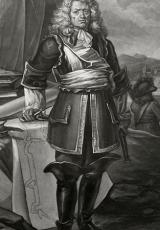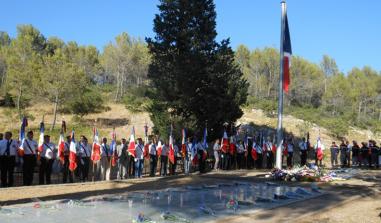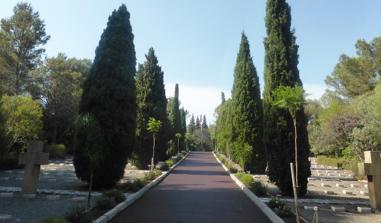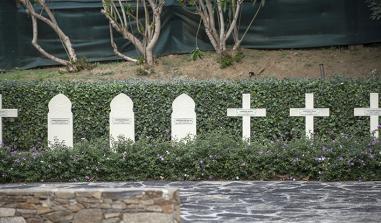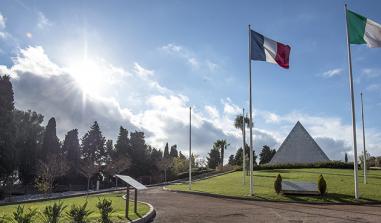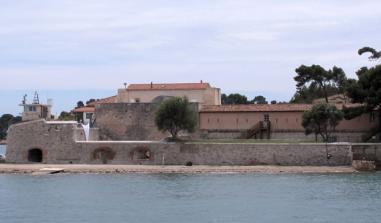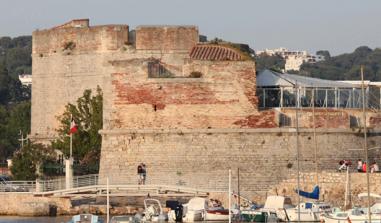The Royal Tower of Toulon
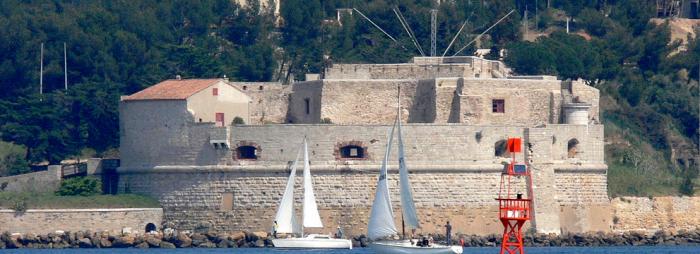
La Tour Royale à Toulon. Source : http://www.photos-de-villes.com
Constructed in 1513 on the orders of King Louis XII, the Royal Tower was built to defend the entrance to the port of Toulon.
From the beginning of the 16th century, the inhabitants of Toulon were heavily preoccupied with sheltering their town from an attack by sea. And although, with its fortified wall dating from the 14th century, Toulon could consider itself sheltered from a sudden attack from the land, its harbour remained entirely open to enemy fleets. Listening to the pleas of the province and alerted by the town council, in 1513 KIng Louis XII ordered the construction of a fortification in the form of a tower in the entrance to the port to defend its access. Originally called the Royal Tower, this fortification was immediately called the Great Tower or the Big Tower by the people, who were amazed at its size. In a municipal debate held on the 16th July 1513, the town council decided that this tower would be built on the cape known as la Manègue, in the entrance to the port, as the king had wanted. The execution of the work was under the supervision of an Italian engineer of great renown, Jean-Antoine de la Porta, who arrived at the port in early May 1514. The work was started on the 14th May, the date of the first excavations, to public rejoicing and would continue, often halted due to financial difficulties, for ten years. The Great Tower was completely finished and armed in May 1524. Command of it was entrusted to the unsavoury individual Captain Jehan du Mottet, famous for the cowardice with which he surrendered it to the Imperials, without a struggle, for 500 gold Ecus, when the latter invaded Provence in 1524. The enemy found 3 canons and 9 other artillery pieces there, which they drove to their camp outside Marseille, opening up the first route through the Ollioules gorges, in order to avoid the harsh climb up the Corps de Garde pass. Amongst the canons taken were the famous culverin, called Lézarde, which was later to cause so much harm to the French on the day of the Battle of Pavia (24th February 1525) and which was partly responsible for the victory. In 1529, the Great Tower was rearmed and as a result was able to resist in July and August 1536, when the fleet of Andréa Doria entered Toulon. It could not, however, prevent it from occupying the harbour during the new invasion of Provence by Charles Quint. During the persecutions suffered by the protestants in the province as a result of the Saint-Barthélémy massacre, about twenty Reformist families found asylum in the Great Tower.
It played no active role during the siege of 1707, but as it was powerfully armed, the ships of Admiral Showel's English fleet did not dare to break through the harbour. Towards the end of the 17th century, this fortress, which had for a long time provided the only defence of Toulon from the sea, was already no longer capable of providing a useful service. However, in 1746, it was still equipped with fifteen 24 canons, ten 18's, four 12's and two 6's, making a total of thirty one canons. From 1770 onwards, which was when Fort Lamalgue was finished, the Great Tower no longer played a major role in the defence of the harbour. The Revolution was to turn it into a jail; many victims were imprisoned and perished there. It had the same use during the counter-revolution of 1793. On the 19th May 1798, Josephine came to the Tower to say goodbye to Bonaparte as he set off on his expedition to Egypt. Although it was a pleasant prison in 1809 for the crew of the English frigate the Proserpine, captured off Sicié on the 27th February, for the duration of the First Empire it would accommodate in a more rudimentary fashion the many draft dodgers awaiting trial or their departure to the companies of pioneers. In 1825, the chapel was demolished and the small cemetery deconsecrated. The Tower had twenty-one canons in 1844. During the Franco-German war of 1870-1871, its basements were used to store the gold of the Bank of France. A project to install a battery of two 370mm canons there was abandoned in 1900. Since then, the Great Tower has been used as a store for naval construction, and to service torpedoes etc. In the 1914-1918 war German prisoners of war were interned there. During the 1939-1945 war it was occupied by the Germans and armed with various weapons, most notably anti-aircraft canons. It was hit several times and was badly damaged during the allied bombardments of 1943-1944. Between 1947 and 1948 it was cleared of rubble and a few minor repairs were carried out. Since the 11th April 1947 it has been listed as a historic monument.
A canon tower, almost circular in shape, 60 metres in diameter, with walls varying in thickness from 5 m to 3 m, it consists of a central nucleus, a low casemated battery with eight embrasures, a platform at access level with a drawbridge and an upper terrace protected by a solid wall forming a parados. It is surrounded by a wide moat. Several modifications have been carried out to the fort over the years: the addition of two low batteries at the end of the 17th century, whose embrasures are now blocked up; the establishment of a barracks on the platform and then a guard house; the development of the upper terraces to accommodate anti-aircraft artillery.
The central nucleus contains a collection of premises laid out on three levels, one above the other and linked by spiral staircases. In addition to two water tanks, there are vaulted halls used as storerooms and dungeons. It was all originally lit by natural light. The nine casemated cells are accessed by a circular gallery. A canon ramp links the stores with the upper terraces, allowing the transportation of artillery and ammunition.
This historic monument, managed by the Ministry of Defence, is covered by a Culture and Defence protocol, signed on the 17th September 2005. Click here to see the list of other buildings ...
Toulon Tourist Information Office Place Raimu 83000 Toulon Tel.: + 33 (0) 4 94 18 53 00
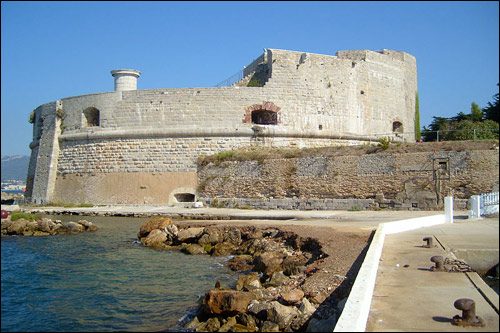
La Tour Royale de Toulon. Source : Wikimedia Commons

La tour royale. Source : Marine Nationale
Practical information
Avenue de la Tour Royale 83000
Toulon
Tél. : 04 94 18 53 00
Accessibilité toute l'année



